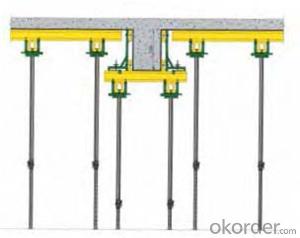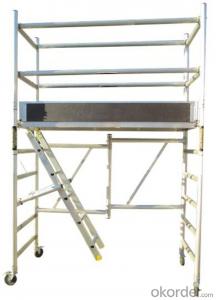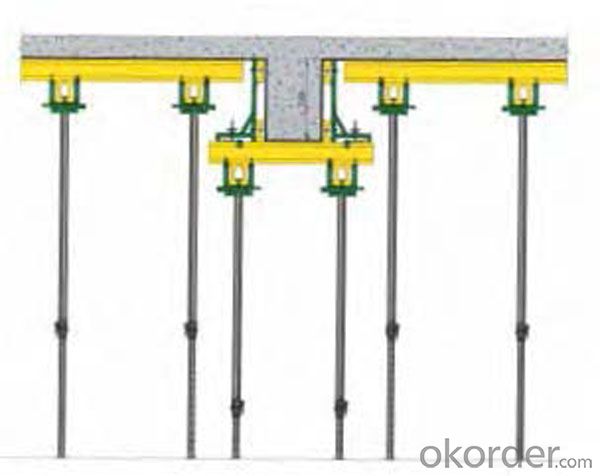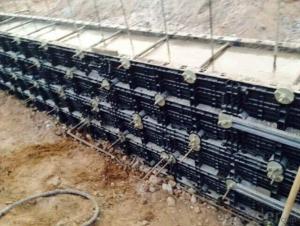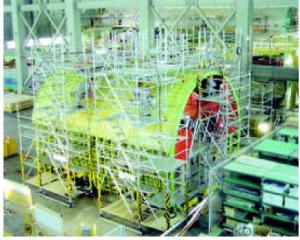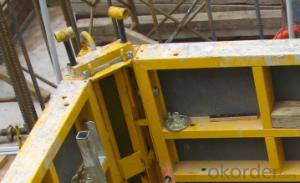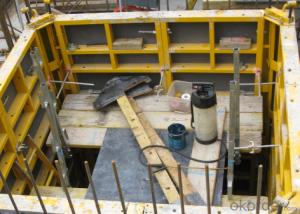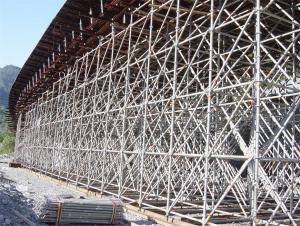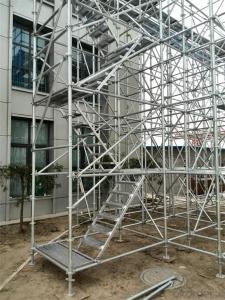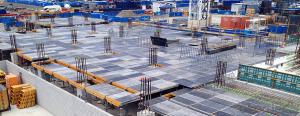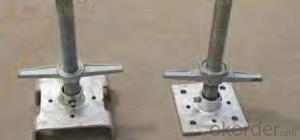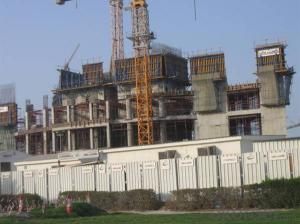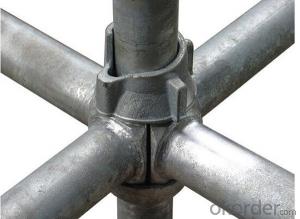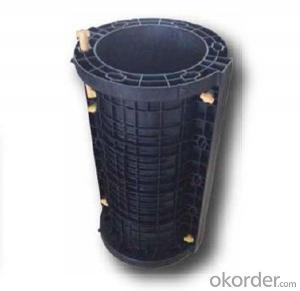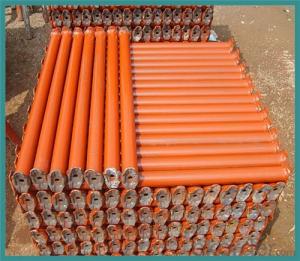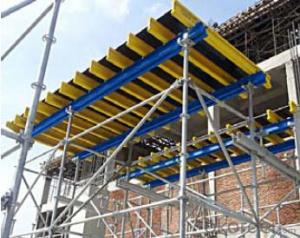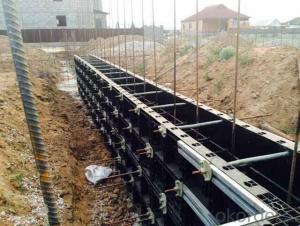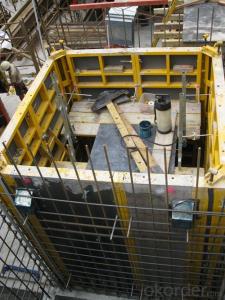Scaffolding Wire Formwork Scaffolding Outrigger New Design
- Loading Port:
- Tianjin
- Payment Terms:
- TT OR LC
- Min Order Qty:
- 10000 set
- Supply Capability:
- 50000 set/month
OKorder Service Pledge
OKorder Financial Service
You Might Also Like
Scaffolding Wire Formwork Scaffolding Outrigger New Design
Used Cuplock Scaffolding For Sale Formwork Scaffolding Catwalk With Great Price
Plastic Formwork Concrete Formwork System New Design
Developing with new technology materials, steel formworks is no longer a must in construction concrete process. More and more buildings are established with plastic formworks. And workers love this new formworks much more.
The advantages of plastic formworks:
Scaffolding Wire Formwork Scaffolding Outrigger New Design
1.First of all--light
Yes it is the first advantage of plastic formwork. It wins the great praise of both contractors and workers.
The biggest panel is 120×1500px,weights 10.5kg only. It can be lift and set up by one person easily, which means there is no need for cranes on site.Saves a lot of cost and time.
2.Easy set up
Different size of panels can firmly locked by simply turn the special handles to 90 degree. The Panels has rib on the back, which makes the system need not traditional wood blocks and nails. The panels have holes to fit tie rod, guarantee the strength of the whole system.
3.Modularity
Modular formworks composed by different size of panels,the main item is 120×1500px panel,which is used for the large area of walls and slabs. There are also small size of panels like 10×1500px,20×1500pxcm,25×1500px,inner corner 20×20×1500px and outer corner 10×5×1500px.Due to the variety of panel size, the system can form almost all size walls 120×1500px panel of multiply by 125px. The material of modular formwork is PC-ABS mixed with special glass fibers which enable panels to hold high pressures.
4.Strength
The handles are made by high strength Nilon, each panel locked by at least 4 handles, which makes the whole system strong enough to pour 1000px walls.
5.Environment friendly
The system needs no cut and nail due to the variety size. Also it needs nearly no wood. The material can be recycled after broken, so it will not pollute the environment.
6.Consequent
Concrete does not stick to plastic formwork, thus the panels need no oil before using, and can be cleaned simply by water. The surface of the wall which build by modular formwork is smooth and without rework.
Scaffolding Wire Formwork Scaffolding Outrigger New Design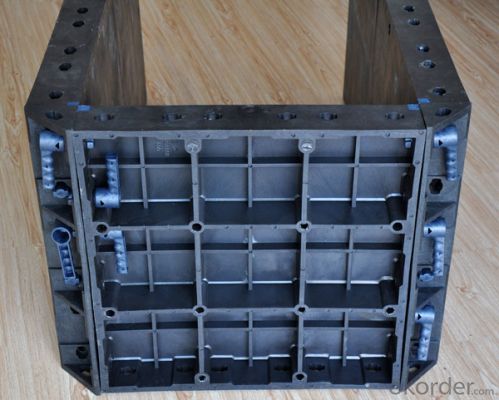
Scaffolding Wire Formwork Scaffolding Outrigger New Design
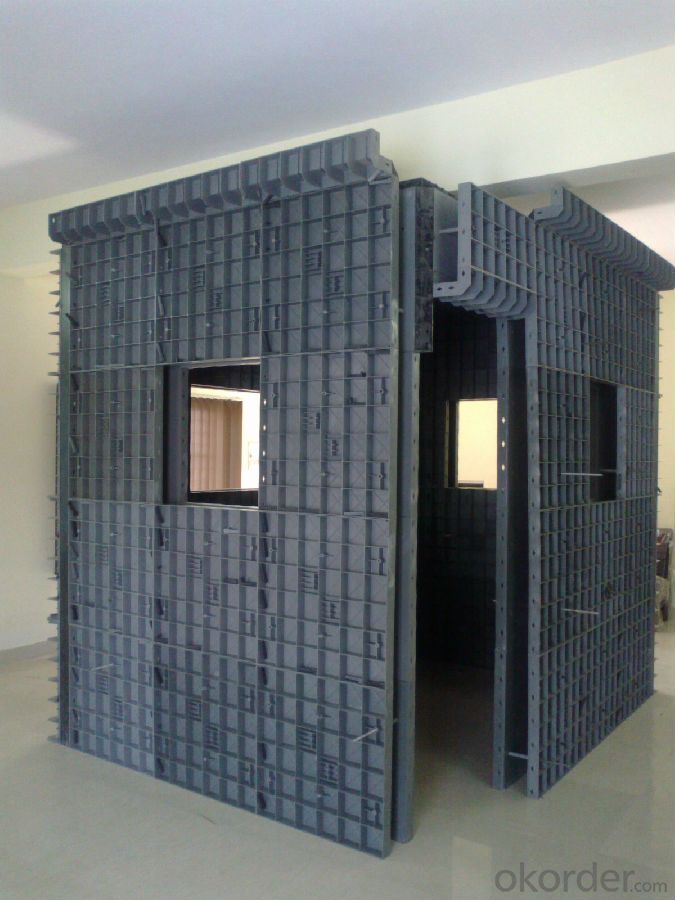
Scaffolding Wire Formwork Scaffolding Outrigger New Design
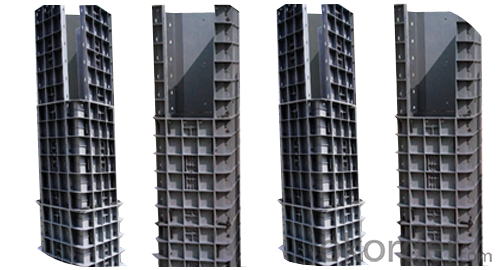
Advantage
* Good loading capacity
* Easy to assemble and dismantle
* Customized solution helps you work safe, save cost and convenient
* Excellent quality for formwork & scaffolding with wide choices
Packing
in bulk or in bundle, or as requested
Shipping
15-20 Days.
Normally small orders, it needs just 15-20 business days to the port. For goods with stock, it would be even shoter.
Scaffolding Wire Formwork Scaffolding Outrigger New Design
Other scaffolding & formwork products:
(1) Scaffolding System:
Including Ringlock Scaffolding System and accessories; Cuplock Scaffolding System and accessories; Kwikstage Scaffolding System and accessories; Haki Scaffolding System and accessories;
(2) Scaffolding Frame & Accessories:
Including Walk Through Frame Scaffolding; Ladder Frame Scaffolding; Accessories; we also can make scaffolding according to your samples or drawings.
(3) Scaffolding Couplers/Clamps
(4) Formwork System Scaffolding & Accessories
FAQ Scaffolding Wire Formwork Scaffolding Outrigger New Design
Why Us?
We are one of the Top 500 in the world, largest construction materials supplier in China. Also we are a state-owned company and respond to every customer with large and also small orders.
Excellent products with competitive prices.
Efficient services in pre and after sale.
Full energy with affluent experience team.
- Q: The displacement of the H/500 steel structure design code page 121 A.2 multilayer framework, the relative displacement between layers of multilayer frame h/400. With the gauge gauge 5.5.1 multi, high-rise steel structure 1/300.I would like to ask the multi-storey frame structure of the inter story displacement in the end how to control it?
- The above "anti regulation" is the 08 edition. The new 10 edition of the "Regulations" provisions are 1/250, the provisions of the further explanation that this limit can also be relaxed.
- Q: Can steel frame formwork be used for tall structures?
- Yes, steel frame formwork can be used for tall structures. Steel frame formwork is known for its strength and durability, making it suitable for constructing tall buildings. Its rigid structure allows for precise and efficient concrete pouring, ensuring the stability and integrity of the structure. Additionally, steel frame formwork can be easily adjusted and reused, making it a cost-effective solution for tall construction projects.
- Q: How does steel frame formwork impact labor requirements?
- The labor requirements in construction projects can be significantly affected by steel frame formwork. Steel frame formwork has several key advantages, including its durability and reusability. Unlike traditional wooden formwork, steel frame formwork can be used multiple times, which reduces the need for frequent replacement and subsequently decreases the labor needed for formwork installation and removal. Furthermore, steel frame formwork is lightweight and easy to handle, making it simpler for laborers to assemble and disassemble. This not only saves time but also reduces the physical strain on workers, ultimately improving their productivity and decreasing the risk of fatigue-related accidents. In addition, steel frame formwork provides greater flexibility and precision in shaping concrete structures, allowing for more efficient and accurate construction. This precision reduces the necessity for manual adjustments, resulting in fewer errors and rework, thus saving labor time and costs. Moreover, the quick assembly and disassembly process of steel frame formwork is well-known. The standardized components can be easily interlocked, reducing the time and effort necessary for formwork installation and removal. This efficiency leads to faster construction progress and shorter project durations, ultimately decreasing labor requirements. In conclusion, the utilization of steel frame formwork in construction projects has a positive impact on labor requirements by reducing the need for frequent replacements, improving worker productivity, minimizing errors, and facilitating quick assembly and disassembly.
- Q: Can steel frame formwork be used in projects with limited construction resources or equipment?
- Steel frame formwork is a practical choice for projects with limited construction resources or equipment. It is a versatile and durable solution for creating concrete structures, requiring minimal equipment and resources for installation and operation. Compared to traditional timber formwork, steel frame formwork offers several advantages in terms of strength, stability, and reusability. Steel frames are highly rigid, capable of withstanding greater pressures, allowing for the construction of taller and more complex structures. Additionally, steel formwork systems are easily assembled and dismantled, reducing the need for specialized equipment and labor. The reusability of steel formwork further enhances its suitability for projects with limited resources. Unlike timber formwork, which is often discarded after a few uses, steel formwork can be used multiple times, reducing overall costs and material wastage. Furthermore, steel formwork provides a consistent and uniform finish to concrete structures, ensuring high-quality construction results. This is particularly beneficial for projects with limited resources, as it eliminates the need for additional finishing work or repairs. In conclusion, steel frame formwork is a practical option for projects with limited construction resources or equipment. Its strength, stability, reusability, and ease of installation make it a cost-effective and efficient solution for creating concrete structures in such circumstances.
- Q: Can steel frame formwork be used for both flat and sloped slab construction?
- Yes, steel frame formwork can be used for both flat and sloped slab construction. Steel frame formwork provides a robust and durable solution for creating the necessary mold or framework for pouring concrete. It can be easily adjusted to accommodate different slab angles and configurations, making it suitable for both flat and sloped slabs. The steel frame formwork system allows for precise alignment and provides a strong support structure, ensuring that the concrete slab is poured accurately and securely. Additionally, the steel frame formwork can be reused multiple times, making it a cost-effective choice for both flat and sloped slab construction projects.
- Q: How does steel frame formwork handle the placement of reinforcement bars within the concrete structure?
- Steel frame formwork has been specifically engineered to manage the placement of reinforcement bars in concrete structures. This system consists of interconnected steel panels that form a robust framework, acting as a mold for pouring concrete. One of the key benefits of steel frame formwork lies in its ability to effortlessly accommodate reinforcement bars. The steel panels can be easily manipulated and aligned to create the desired shape and dimensions of the concrete structure, enabling precise placement of the bars. This factor is pivotal in guaranteeing the structural integrity and robustness of the concrete. Moreover, the steel frame formwork incorporates a range of features that aid in the correct positioning of reinforcement bars. For instance, it may include pre-drilled holes or slots in the steel panels, allowing for the insertion and secure fixing of the bars prior to pouring the concrete. Additionally, the formwork system can integrate specialized accessories like spacers or brackets to maintain accurate spacing and alignment of the reinforcement bars within the concrete structure. Furthermore, steel frame formwork offers exceptional support and stability throughout the pouring and curing process. The inflexible steel framework effectively retains the reinforcement bars in place, preventing any displacement or shifting that could jeopardize the structural integrity of the concrete. This guarantees that the bars remain in their intended positions and are completely enveloped by the concrete, maximizing their efficacy in reinforcing the structure. To summarize, steel frame formwork is purposefully designed to handle the placement of reinforcement bars in concrete structures. Its adaptability, versatility, and stability make it an ideal choice for ensuring precise positioning and effective reinforcement of the bars, ultimately contributing to the overall strength and durability of the concrete structure.
- Q: How does steel frame formwork contribute to the overall earthquake resistance of a concrete structure?
- Steel frame formwork contributes to the overall earthquake resistance of a concrete structure by providing a strong and rigid framework that holds the concrete in place during an earthquake. This formwork system helps to distribute the seismic forces evenly across the structure, minimizing the risk of collapse or structural damage. Additionally, the steel frame formwork enhances the structural integrity and stability of the concrete elements, ensuring that they can withstand the dynamic loads and vibrations caused by seismic activity.
- Q: How does steel frame formwork affect the overall structural integrity of a building?
- Steel frame formwork can have a significant impact on the overall structural integrity of a building. Firstly, steel frame formwork provides a strong and rigid support system for the concrete during construction. This ensures that the concrete is poured and cured properly, leading to a more durable and robust structure. The use of steel frame formwork also allows for precise and accurate placement of the concrete, which is essential for maintaining the structural integrity of the building. The formwork system ensures that the concrete is poured in the correct location and shape, preventing any potential weaknesses or inconsistencies in the structure. Furthermore, steel frame formwork provides excellent stability and resistance against external forces such as wind, earthquakes, and other loads. The steel framework acts as a reinforcement, enhancing the overall strength and stability of the building. This is particularly important in areas prone to seismic activities or extreme weather conditions. Moreover, steel frame formwork is highly resistant to corrosion and deterioration, making it a long-lasting and reliable choice for construction. This durability ensures that the formwork system does not compromise the structural integrity of the building over time. Overall, the use of steel frame formwork greatly enhances the structural integrity of a building. It provides a strong support system, precise placement of concrete, stability against external forces, and long-term durability. Architects and engineers often prefer steel frame formwork due to its ability to ensure a safe and sturdy structure, making it an essential component in the construction process.
- Q: What are the safety certifications required for steel frame formwork?
- The safety certifications required for steel frame formwork typically include ISO 9001 for quality management systems, ISO 14001 for environmental management systems, and OHSAS 18001 or ISO 45001 for occupational health and safety management systems. Additionally, certifications such as CE marking, UL listing, or AS/NZS standards compliance may also be necessary depending on the specific country or region.
- Q: How does steel frame formwork facilitate the construction of walls and columns?
- Steel frame formwork facilitates the construction of walls and columns by providing a sturdy and reusable structure for pouring concrete. The steel frames can be easily assembled and disassembled, allowing for efficient and rapid construction. Additionally, the formwork provides accurate dimensions and smooth finishes, ensuring high-quality and precise construction of walls and columns.
Send your message to us
Scaffolding Wire Formwork Scaffolding Outrigger New Design
- Loading Port:
- Tianjin
- Payment Terms:
- TT OR LC
- Min Order Qty:
- 10000 set
- Supply Capability:
- 50000 set/month
OKorder Service Pledge
OKorder Financial Service
Similar products
Hot products
Hot Searches
Related keywords
